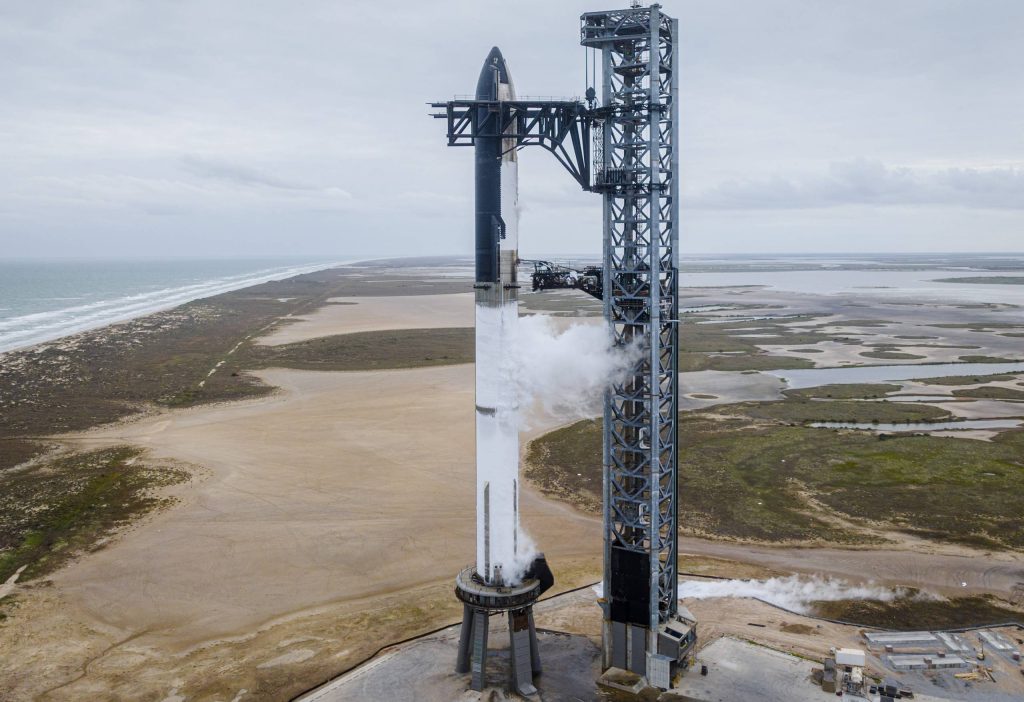
[ad_1]
SpaceX has efficiently launched its first batch of next-generation Starlink V2 satellites, probably kicking off a brand new period of affordability for the constellation.
Concurrently, demonstrating simply how far SpaceX is forward of its opponents and the remainder of the spacefaring world, the Starlink 6-1 launch culminated within the one centesimal consecutively profitable touchdown of a Falcon rocket booster. Consequently, SpaceX’s touchdown reliability now rivals the launch reliability of among the most dependable rockets ever flown. That extraordinary feat bodes nicely for SpaceX’s next-generation Starship rocket, which is designed to propulsively land people on the Earth, Moon, Mars, and past.
SpaceX’s touchdown reliability milestone is made all of the extra spectacular by the dearth of speedy competitors. Greater than seven years after SpaceX’s first profitable Falcon 9 booster touchdown and 6 years after the corporate’s first profitable Falcon booster reuse, Falcon 9 and Falcon Heavy are nonetheless the one reusable orbital-class rockets in operation.
Blue Origin has had some success reusing the primary stage of its suborbital New Shepard rocket. Rocket Lab has additionally recovered small Electron rocket boosters from the ocean, however it’s but to catch a booster with a helicopter – a necessity for cost-effective reuse. Many different corporations have introduced or begun creating their very own partially or fully-reusable rockets. However even in a best-case state of affairs, essentially the most promising of these doubtlessly aggressive rockets are nonetheless a yr or two from their first launch makes an attempt, not to mention their first profitable recoveries and reuses.
SpaceX debuted the Falcon 9 rocket behind most of its profitable booster recoveries and reuses in June 2010. SpaceX recovered a Falcon 9 booster for the primary time in December 2015 and reused a (completely different) booster for the primary time in March 2017. It accomplished almost all of that dangerous improvement work throughout launches for paying clients.
Even after the primary success, many unsuccessful touchdown makes an attempt adopted as SpaceX pushed the efficiency envelope and found new failure modes. Falcon’s most up-to-date touchdown failure occurred throughout a Starlink launch in February 2021 and was attributable to a gap in a versatile ‘skirt’ meant to maintain Earth’s superheated ambiance out of the flight-proven booster’s engine part.
Nonetheless, each touchdown since Falcon 9’s Starlink-19 touchdown failure has been profitable. On February twenty seventh, 2023, nearly precisely two years after that failure, Falcon 9 booster B1076 touched down on one in every of SpaceX’s three drone ships, marking the rocket household’s one centesimal consecutively profitable touchdown. Starlink 6-1 was additionally the Falcon household’s 183rd consecutively profitable launch, as a Falcon touchdown failure has by no means prevented the completion of a mission’s main goal.
Launch-wise, Falcon 9 and the Falcon household have already turn out to be essentially the most statistically dependable rockets in historical past. Only a few rockets in historical past have managed 100 consecutively profitable launches, not to mention landings. For instance, in response to spaceflight reporter Alejandro Romera, the following most dependable American rocket – the McDonnell Douglas Delta II – narrowly achieved 100 consecutively profitable launches earlier than its retirement in 2018. The touchdown reliability of SpaceX’s Falcon rockets is thus tied with the launch reliability of essentially the most dependable American rocket not constructed by SpaceX.
Moreover, SpaceX Falcon booster landings are actually statistically extra dependable than the launches of United Launch Alliance’s much-touted Atlas V rocket, which has (kind of) efficiently launched 97 occasions.

Falcon’s touchdown reliability is an encouraging signal for SpaceX’s next-generation Starship rocket. For Starship to completely obtain SpaceX’s objectives, it’ll finally want to have the ability to propulsively land people on Earth and at different locations all through the photo voltaic system. SpaceX at the moment has no plans no plans to develop an unbiased crew escape system for Starship, which means that the rocket itself will as a substitute must display extraordinary general reliability. SpaceX executives have acknowledged that Starship will solely be deemed protected sufficient to launch people as soon as it has accomplished “tons of” of profitable launches and, presumably, landings.
Falcon has managed 100 profitable landings in a row regardless of massive gaps in redundancy. Most touchdown burns are performed with a single Merlin 1D engine. Any difficulty with that engine would probably lead to a failed touchdown. Falcon boosters even have 4 touchdown legs and 4 grid fins powered by a single hydraulic pump. The failure of that pump or one in every of 4 legs have demonstrably doomed earlier landings.
Starship’s a lot bigger dimension and extra efficiency may present a bigger margin for error and permit for extra redundancy. However Falcon has demonstrated that that even a rocket with a number of evident single-points-of-failure can obtain 100 consecutively profitable landings.

[ad_2]